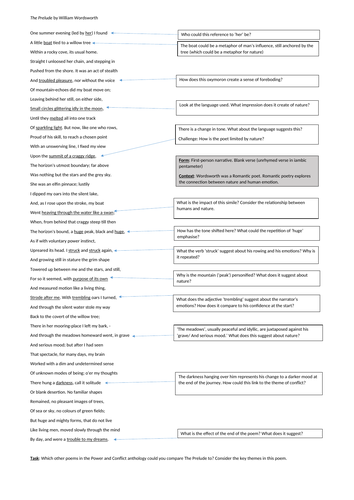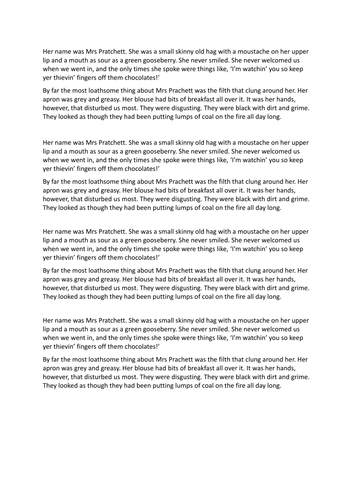89Uploads
116k+Views
39k+Downloads
English language arts

AQA GCSE Language Paper 1 Section A - The Lie Tree
A question paper to prepare students for GCSE Language Paper 1 Section A (AQA).
It is based on the opening of The Lie Tree by Francis Hardinge.

A Worksheet on Complex Sentences (3)
This worksheet covers simple sentences. It is ideal for revising this topic with Key Stage 3 classes.
This worksheet is the first in a series of three (the other two cover compound and complex sentences)
Make a saving! Buy all three sentences worksheets for just £2.50 here.

A Worksheet on Compound Sentences (2)
This worksheet covers compound sentences. It is ideal for revising this topic with Key Stage 3 classes.
This worksheet is the second in a series of three (the other two cover simple and complex sentences)
Make a saving! Buy all three sentences worksheets for just £2.50 here.

Poetry Introduction: Tinie Tempah Lyrics
A lesson analysing the language in Tinie Tempah’s song ‘Girls Like’.
I used it to introduce to Year 10 to poetry - it’s a great way to prevent the usual groans that happen whenever poetry is mentioned!

The Hound of the Baskervilles - Opening
A lesson analysing how character voice is established in the opening of The Hound of the Baskervilles.

Pride Month - Jeanette Winterson English Lesson
An English lesson for Pride Month. This could also be used at any other time during the academic year! It just specifically mentions Pride and why it is important at the start of the lesson.
It looks at an extract of Jeanette Winterson’s autobiography Why Be Happy When You Could Be Normal? and asks students to analyse the language in it.
Suitable for higher-attaining KS3 classes or a KS4 class.

The Tell-Tale Heart - 4 Lesson Booklet
A four lesson booklet on The Tell-Tale Heart by Edgar Allan Poe, aimed at Year 9 students.
The learning questions are:
What is the context of The Tell-Tale Heart?
How is the narrator of The Tell-Tale Heart presented?
How does the author use structural devices?
How can I write in the style of Edgar Allan Poe?

AQA Language Paper 1, Section B - Descriptive Writing
This is a descriptive writing question (in the style of AQA, Language Paper 1 Section B)
It includes specific success criteria and an exemplar paragraph for students.

War Photographer by Duffy - Three Differentiated A3 Worksheets (AQA Poetry - Power and Conflict)
Three differentiated worksheets on War Photographer by Carol Ann Duffy. They are all A3 so there is space for students to annotate.
Designed for GCSE students studying the AQA Power and Conflict anthology.
These worksheets are also available individually for £1.50 each. This bundle gives you a discount as you can buy all three for £3 .
Images created by Resources_by_Emma.
Bundle

AQA GCSE Language Paper 1 - Bundle
A bundle linked to AQA GCSE English Language Paper 1.
Two exam papers on Section A and one lesson on Section B (which focuses on descriptive writing).
Save 50% by buying this bundle!

Wuthering Heights - Catherine Earnshaw Essay
A lesson to help students structure and write an essay on Catherine Earnshaw in the first nine chapters of Wuthering Heights.

The Prelude by Wordsworth - GCSE Worksheet (AQA Poetry - Power and Conflict)
An A3 worksheet which guides students through the extract of The Prelude which appears in the AQA Poetry Power and Conflict anthology.
Three differentiated A3 worksheets on War Photographer by Carol Ann Duffy are also available here.
These worksheets are available as a bundle for £2.50 or separately for £2 each.
War Photographer Worksheet 1 for lower-attaining GCSE students.
War Photographer Worksheet 2 for middle-attaining GCSE students.
War Photographer Worksheet 3 for higher-attaining GCSE students.

Boy - Roald Dahl. Creative Writing
A lesson on Boy and Mrs Pratchett (from the Dead Mouse Plot). I used it for mixed ability Year 7s.

Poetic Devices for Key Stage 3
Match the definitions of words with the poetic device.
Ideal as a revision resource or starter activity.
Images created by Resources_by_Emma.
















